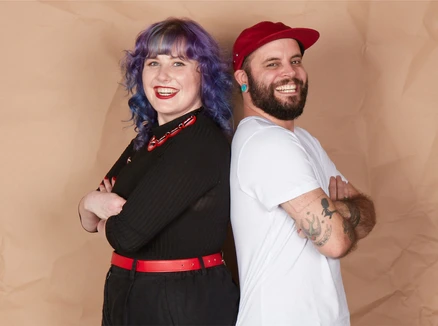Barriers to cancer screening and working with community
Barriers faced by LGBTQ+ communities which impact cancer screening participation. You’ll also learn how healthcare professionals can help improve participation rates and access resources.
Barriers to cancer screening
The following barriers have been identified as common for women who are same-sex attracted, transgender or non-binary people with a cervix.
These barriers include, but are not limited to:
- Misconceptions by patients and healthcare providers that same-sex attracted women, and transgender or non-binary people with a cervix, are not at risk of HPV and cervical cancer.
- Health professionals making assumptions about their sexual orientation, gender and sex characteristics.
- Discrimination and social stigma.
- Fear of negative attitudes from healthcare providers.
- Lack of understanding from healthcare professionals about sexual and gender diversity.
- Difficulty finding a suitable healthcare provider (for example, someone who is accepting, empathetic, non-judgemental).
- Previous negative experiences with healthcare providers/healthcare services.
- Difficulty having their partner/s or other significant people recognised as family by health settings.
- Less or no support from their family of origin.
- Little or no LGBTQ+ specific cancer information or support.
- Reluctance to disclose sexual orientation/identity.
- Higher levels of depression and anxiety because of a history of marginalisation, violence, stigma, exclusion and discrimination.
- Potential distress for transgender patients caused by the conflict between their sex assigned at birth and their gender identify.
- Transgender men with a cervix may find speculum examinations painful.
How can healthcare professionals help improve cancer screening for LGBTIQ+ communities?
Healthcare professionals who provide cancer screening services or support should adopt welcoming and safe health care practices to create environments where every patient feels affirmed, validated and free from judgment.
This can include:
- Displaying the rainbow flag and transgender flag
- Displaying LGBTQ+ images and logos
- Providing gender-neutral bathrooms
- Provision of LGBTQ+ inclusive resources and support
- Asking patients their pronouns and gender assigned at birth to encourage appropriate screening recommendations
- Promote self-collection option for the Cervical Screening Test as an option for overcoming many of the physical and psychological barriers to screening faced by LGBTQ+ people with a cervix
- Read an inclusive-language guide on how to use language respectfully and inclusively when working with and referring to LGBTQ+ people. Here’s one from the Victorian government.
You can also embed practices within your organisation such as:
- Co-designing with members of the LGBTQ+ community to create targeted health promotion activities highlighting the importance of early detection, prevention and screening in cancer care.
- Providing capacity building for your staff on how to engage with the LGBTQ+ community relating to cultural competency and safety in cancer screening. This can relate to appropriate language to use, trauma informed care, how to ask patients gender assigned at birth and pronouns appropriately, and general understanding of the social discrimination that is encountered within this community when accessing health services.
- Support and prioritise research within LGBTQ+ community to build evidence and understanding of barriers and enablers to cancer screening, prevention and early detection - particularly on bowel screening (given there is little evidence on this topic).
Cervical cancer screening for LGBTQ+ communities
Information on evidence-based strategies for healthcare services to engage with the LGBTQ+ community on cervical screening is available at the National Cervical Screening Program website.
Health services and community organisations play an important role in increasing cervical screening through:
- Communications and education - Inform women who are same-sex attracted, and transgender or non-binary people with a cervix, that they are at risk of cervical cancer and encourage screening. When appropriate, use terminology and images that encompasses diversity of sexual orientations.
- Training - Encourage health service staff and community staff working with the LGBTQ+ community to undertake LGBTQ-specific cultural sensitivity training. You can find training options at the bottom of this page.
This Cancer Council Victoria and Thorne Harbour campaign was developed to raise awareness of cervical cancer screening among this community.
Breast cancer screening for LGBTQ communities
BreastScreen Victoria provide services that are inclusive, welcoming and accessible to LGBTQ+ people.
The organisation holds regular LGBTQ+ community screening sessions called Rainbow Sessions. Sessions are held outside of business hours at various BreastScreen clinics. They are designed to create a safe space for people to screen individually or as a group among other LGBTIQ+ people.
Links to resources and other pages
- Find cancer screening resources for the LGBTQ+ community
- Watch the Australian Centre for the Prevention of Cervical Cancer's webinar on cancer screening for LGBTQ+ communities
- Download Cancer Council’s LGBTQI+ People and Cancer booklet
- Find links to support networks for LGBTQ+ communities
- Find statistics on LGBTQ+ cancer screening rates
- For further information about targeted cancer screening health promotion initiatives for LGBTQ+ communities, visit our case studies page
- ACON Pride Training course
- Australian Primary Health Care Nurses Association’s 101 - LGBTIQ+ Inclusive Practice in Health Care training
